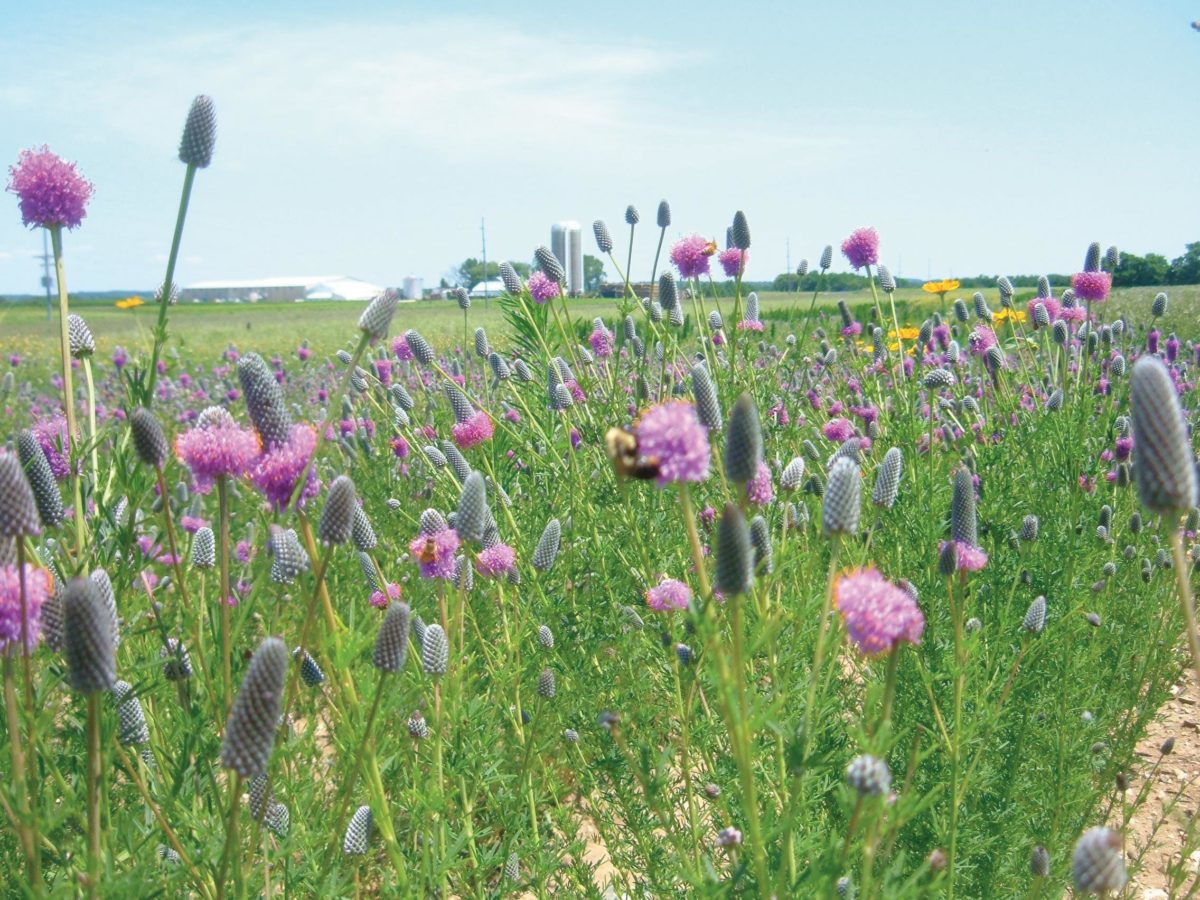
Protecting pollinators in agricultural settings begins with whole-farm planning. The layout of fields, woodlots, and waterways all influence the density and diversity of beneficial pollinating insects. Most wild bees for instance only forage a short distance from their nest—often less than 200 yards (~180 meters). If the distances between nest habitat and the crops that need pollination are farther than this, optimal seed set won’t be realized. An ideal farm setting for pollinator conservation consists of small fields, 10 acres (~4 hectares) or less, separated by fencerows or buffer strips of naturalized habitat (Figure 10.5). Alley cropping, a practice in which row crops are planted between parallel rows of trees, can be an effective way to create smaller fields while also providing habitat for beneficial insects.
Fallow land may qualify for various USDA conservation programs such as the Conservation Reserve Program (CRP), the Environmental Quality Incentives Program (EQIP), or the Wildlife Habitat Incentives Program (WHIP). Under such programs, landowners who create areas of pollinator-friendly plants may qualify for financial incentives. CRP projects for example can be an excellent opportunity for farmers to make a small amount of money on otherwise marginal land, and provide habitat for pollinators at the same time. For examples of plants that are attractive to wild pollinators and that can be used in these programs, see Table 10.1. Information and application materials for these programs are available from your local USDA Natural Resources Conservation Services (NRCS) office.
Along with land planning, actual production practices have a tremendous impact on pollinator numbers. Two-thirds of all native bee species nest underground. Because of this, ground disturbance should be minimized wherever possible. Extensive tillage in particular can be extremely destructive. Soil fumigation and the use of plastic mulch should also be avoided if possible. Flat areas of well-drained sandy loam should be protected; nest holes suggest the presence of ground-nesting bees. Well-drained sloping soils and north-facing slopes should be protected because they are believed to be used by overwintering bumble bee queens.
Cropping systems may also be optimized to provide food for wild pollinators. Asynchronous planting and planting crops side-by-side that have successive bloom periods will provide floral sources over a longer period of time. Cover crops can also be allowed to flower before they are mowed or plowed under. And bolted crops, like lettuce or radish, might be left in the field until they complete flowering.
Pesticide use can obviously be extremely detrimental to pollinators. In general, the most common pesticides involved in poisoning wild pollinators are the organophosphates (such as acephate, chlorpyrifos, malathion, diazinon), carbamates (like carbaryl), neonicotinoids (such as imidacloprid, clothianidin), and pyrethroids. Accidental poisoning of beneficial insects often occurs when insecticides drift outside of their target area, when they are applied to blooming crops or weeds, and when bees collect contaminated pollen from plants that do not require bee pollination, such as corn. For information on reducing spray drift and pesticide toxicity, see Appendix D.
Finally, the introduction of beneficial insects into agricultural settings should always be performed with caution. Predatory biocontrol agents may prey upon beneficial local insects, including pollinators. Similarly the introduction of nonlocal ecotype bees can lead to problems. Just because a bee species is native to an area does not mean that a different strain of the same bee will be native to the area. Nor are the parasites and diseases present on those introduced bees necessarily native to an area. An example of this can be seen with blue orchard bee producers in the Pacific Northwest who ship their bees nationwide. While the blue orchard bee is native to much of the US, only the eastern subspecies, Osmia lignaria lignaria, is native east of the Rocky Mountains. The potential ecological consequences of moving the western subspecies Osmia lignaria propinqua are unknown. More practically, nonlocal bees often do not develop in synch with local floral conditions, and often fail to thrive in their new environment.
